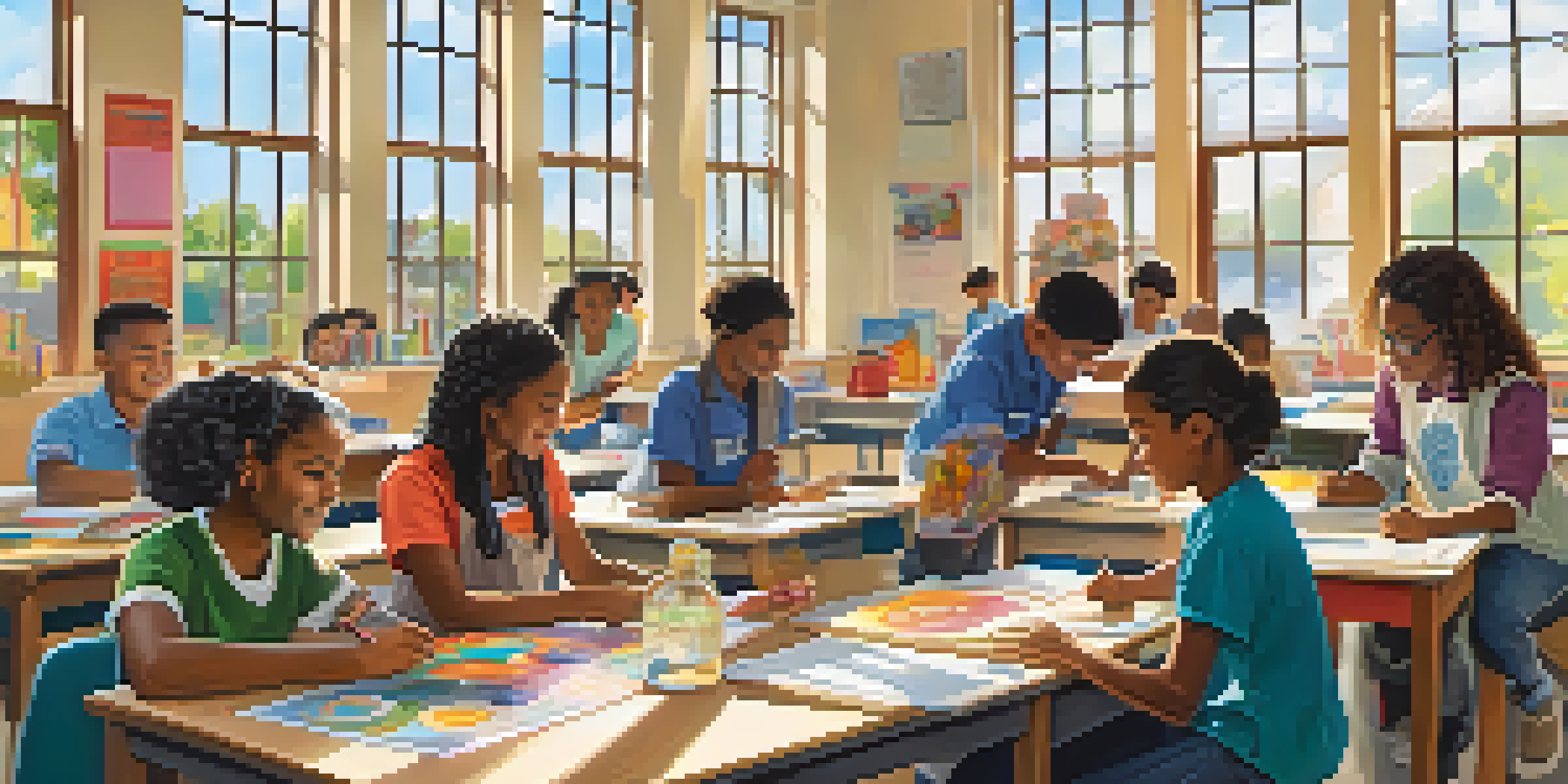Overview of Chicago's Public School System and Its Challenges

Introduction to Chicago's Public School System
Chicago's public school system, one of the largest in the U.S., serves over 300,000 students across more than 600 schools. This diverse district is known for its commitment to providing quality education to children from various backgrounds. However, issues like funding disparities and varying educational standards have made this mission challenging.
Education is the most powerful weapon which you can use to change the world.
The system is managed by the Chicago Board of Education, which oversees curriculum development, teacher hiring, and school policies. While many schools offer innovative programs and opportunities, disparities in resources can lead to significant differences in student outcomes. Understanding these dynamics is key to addressing the system's challenges.
As we explore the intricacies of Chicago's public education landscape, it’s essential to recognize both its strengths and weaknesses. The city’s schools are not just buildings; they are community hubs that reflect the hopes and aspirations of families and neighborhoods.
Demographic Diversity in Chicago Schools
Chicago's public schools are a melting pot of cultures, with students from various ethnic backgrounds, languages, and socio-economic conditions. This demographic diversity enriches the educational experience but also presents unique challenges for teachers and administrators. Ensuring that all students feel included and supported is crucial for their success.

For instance, many schools provide bilingual education to cater to non-English speaking students, which helps bridge the gap in communication. However, the resources required for effective bilingual programs are often limited, leading to disparities in the quality of education. This situation illustrates the broader challenge of meeting diverse learning needs within the same educational framework.
Funding Disparities Impact Education
Chicago's public schools face significant challenges due to funding disparities, which affect resource availability and student outcomes.
Moreover, understanding the cultural context of students can enhance engagement and learning outcomes. Schools that embrace diversity through inclusive curricula and cultural celebrations foster a sense of belonging, which is essential for academic and personal development.
Funding and Resource Allocation Issues
One of the most pressing challenges facing Chicago's public school system is funding. Schools rely heavily on local property taxes, which can lead to significant disparities between affluent neighborhoods and under-resourced areas. As a result, students in low-income districts often lack access to essential resources, such as updated textbooks and technology.
The function of education is to teach one to think intensively and to think critically. Intelligence plus character – that is the goal of true education.
The fight for equitable funding has sparked numerous debates and protests among parents, educators, and community leaders. Many argue that every child deserves a quality education, irrespective of their zip code. This ongoing struggle highlights the need for systemic change to ensure that all schools receive adequate funding.
Additionally, government support can be inconsistent, further complicating the financial landscape. Budget cuts often result in larger class sizes, reduced programs, and layoffs, which directly impact student learning and teacher morale. Addressing these funding issues is vital for creating a more equitable and effective educational system.
Impact of Teacher Retention and Recruitment
Teacher retention and recruitment are critical issues in Chicago's public schools, where high turnover rates can disrupt student learning. Many educators leave the profession due to low salaries, lack of support, and challenging working conditions. This turnover not only affects classroom stability but also hinders the development of strong teacher-student relationships.
Schools that struggle to attract and retain qualified teachers often face challenges in offering specialized courses and extracurricular programs. For example, art and music programs might be cut when there aren’t enough teachers to staff them. This limitation reduces students' exposure to diverse subjects that can enrich their educational experience.
Teacher Retention Affects Learning
High turnover rates among teachers in Chicago disrupt classroom stability and hinder the development of strong student-teacher relationships.
Moreover, investing in teacher development and support can lead to better retention rates. Professional development opportunities, mentoring programs, and competitive salaries are essential to attracting passionate educators who can inspire and engage their students effectively.
Challenges of Standardized Testing
Standardized testing has become a point of contention in Chicago's public schools, with many arguing that it does not accurately reflect a student's abilities or potential. Critics argue that these tests often favor students from higher socio-economic backgrounds, perpetuating existing inequalities within the education system. This issue raises questions about the fairness and effectiveness of using standardized tests as a measure of success.
Additionally, the pressure to perform well on these tests can lead to a narrow focus on test preparation rather than holistic education. Teachers may feel compelled to
teach to the test,
sacrificing creativity and critical thinking skills in the process. This approach can stifle the joy of learning and disengage students who thrive in more interactive environments.
Community Engagement and Parental Involvement
Active community engagement and parental involvement are critical components of a successful school system. In Chicago, schools that foster strong relationships with families often see improved student outcomes. When parents are engaged, they can provide support at home and advocate for their children’s educational needs.
However, many parents face obstacles that limit their ability to get involved, such as work commitments or language barriers. Schools can take proactive steps by offering flexible meeting times, translation services, and creating welcoming environments for families. By breaking down these barriers, schools can enhance parental engagement significantly.
Community Engagement Boosts Success
Active parental involvement and community engagement are crucial for improving student outcomes in Chicago's public schools.
Furthermore, collaboration between schools and local organizations can strengthen community ties and provide additional resources for students and families. Programs that connect families with social services, after-school activities, and educational workshops can create a supportive network that benefits everyone.
Future Directions for Chicago's Public Schools
Looking ahead, Chicago's public school system faces both challenges and opportunities for improvement. Efforts to address funding disparities, enhance teacher support, and promote equity in education are essential for the future. Community leaders, educators, and policymakers must work collaboratively to create a more inclusive and effective system for all students.
Innovative educational models, such as personalized learning and project-based education, are gaining traction in some Chicago schools. These approaches can engage students more deeply and prepare them for the complexities of the modern world. As schools continue to evolve, it's crucial to keep the focus on equity and access for all students.

Ultimately, the future of Chicago's public schools will depend on the collective commitment of the community to prioritize education. By investing in resources, supporting teachers, and fostering student engagement, Chicago can pave the way for a brighter educational landscape.